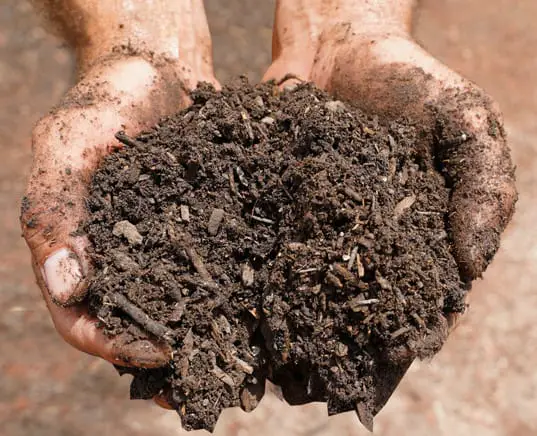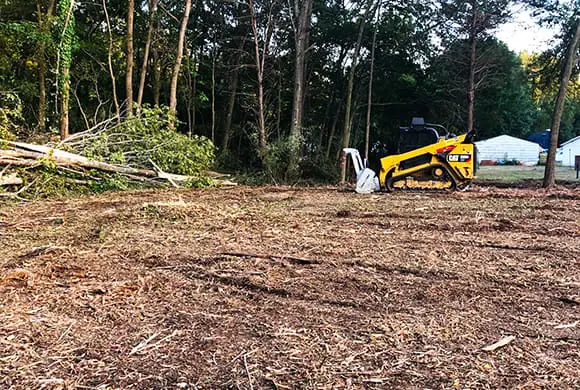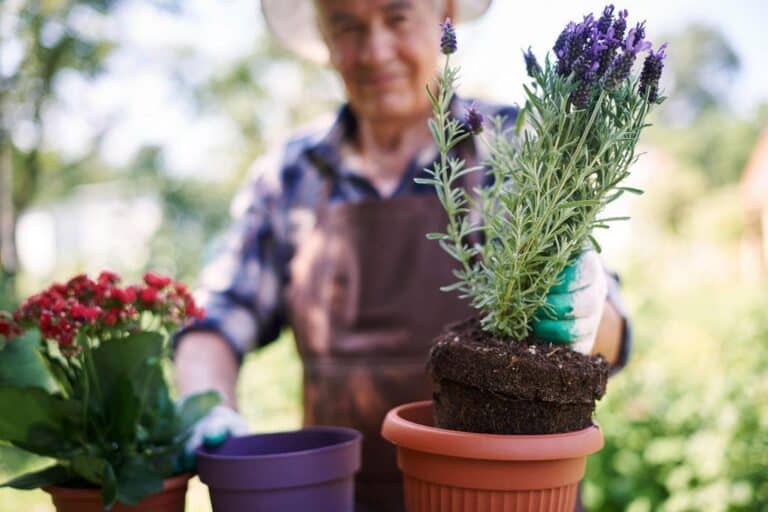How to Sterilize Soil with Jeyes Fluid: Is It Harmful to Plants?
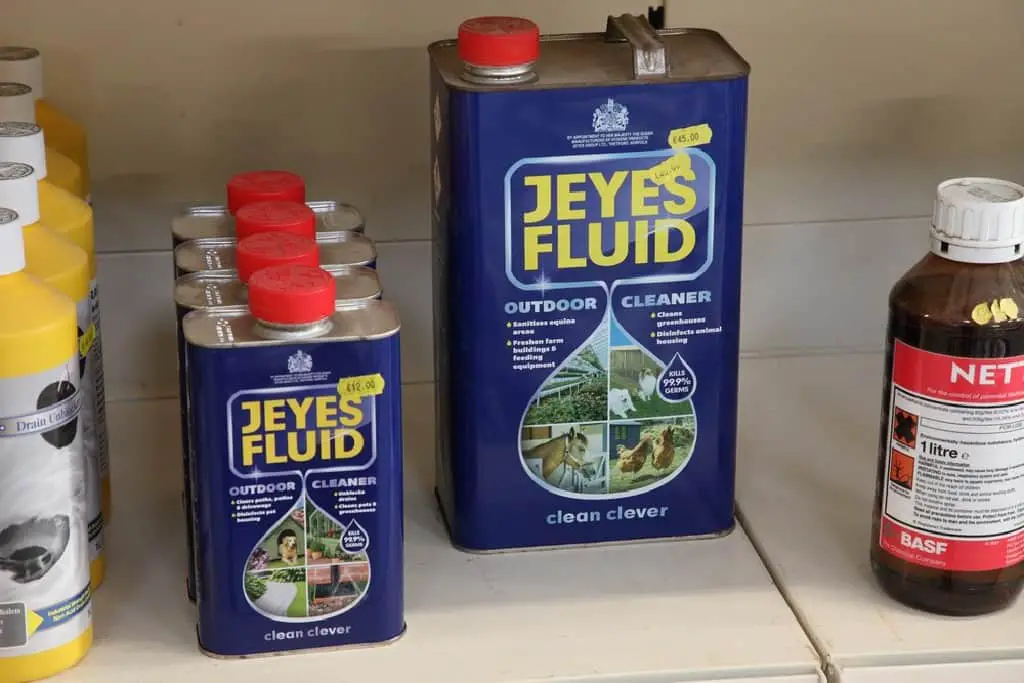
As gardeners, we all dream of cultivating such a paradise, but the road to gardening glory isn’t always smooth. One of the biggest hurdles lies beneath the surface – the soil. Unseen pathogens and pesky pests can silently wreak havoc on our beloved plants, stifling their growth and thwarting our efforts.
Enter Jeyes Fluid, a time-tested solution that promises to transform your soil into a haven of health. Jeyes Fluid is a disinfectant that can be used to sterilize garden soil. It is important to note that some gardeners advise against using Jeyes Fluid to sterilize soil, as it can be harmful to beneficial microorganisms in the soil
In this article, we will explore what Jeyes Fluid is, how it works, its benefits, and whether it poses any risks to plants. So let’s dive in and uncover the secrets of sterilizing soil with Jeyes Fluid!
Understanding Jeyes Fluid
Jeyes Fluid is a well-known household disinfectant and cleaner that has been used for various purposes for many years. It is typically composed of a mixture of creosote, phenols, and soap.
Initially, Jeyes Fluid was used primarily for cleaning and disinfecting outdoor areas, such as patios and driveways. However, its versatile properties have found applications in other areas as well, including gardening and soil sterilization.
The historical background of Jeyes Fluid dates back to its invention in the 19th century. Over time, it has been widely used as a cleaning agent to combat germs and bacteria, making it a household name in many regions. As gardening practices evolved, people discovered its potential for soil sterilization, leading to its application in horticulture and agriculture.
In modern times, gardeners and farmers alike have embraced the use of Jeyes Fluid to sterilize soil before planting. Its efficacy in killing harmful pathogens and pests has made it a valuable asset in maintaining soil health and promoting plant growth.
Soil Sterilization: Importance and Benefits
The process of sterilizing soil is a vital step in gardening and planting. By sterilizing the soil, you eliminate harmful bacteria, fungi, insects, and other pathogens that can hinder plant growth or even cause diseases. This is particularly crucial when using recycled soil or dealing with contaminated areas.
The benefits of using Jeyes Fluid for soil sterilization are numerous. Firstly, it effectively kills a wide range of pathogens, including bacteria and fungi, making it an excellent solution for maintaining healthy soil. Secondly, it can help prevent the spread of diseases between plants and even from one season to the next. Additionally, Jeyes Fluid’s action on pests can protect young plants from potential damage, setting the stage for vigorous growth.
However, be aware of some potential risks and challenges that come with gardening in untreated soil. Soil-borne diseases and pests can significantly impact plant health, leading to reduced yields or even total crop failure. Neglecting soil sterilization can also result in the spread of harmful pathogens, affecting nearby plants and the overall garden ecosystem.
Why Sterilize Soil with Jeyes Fluid?
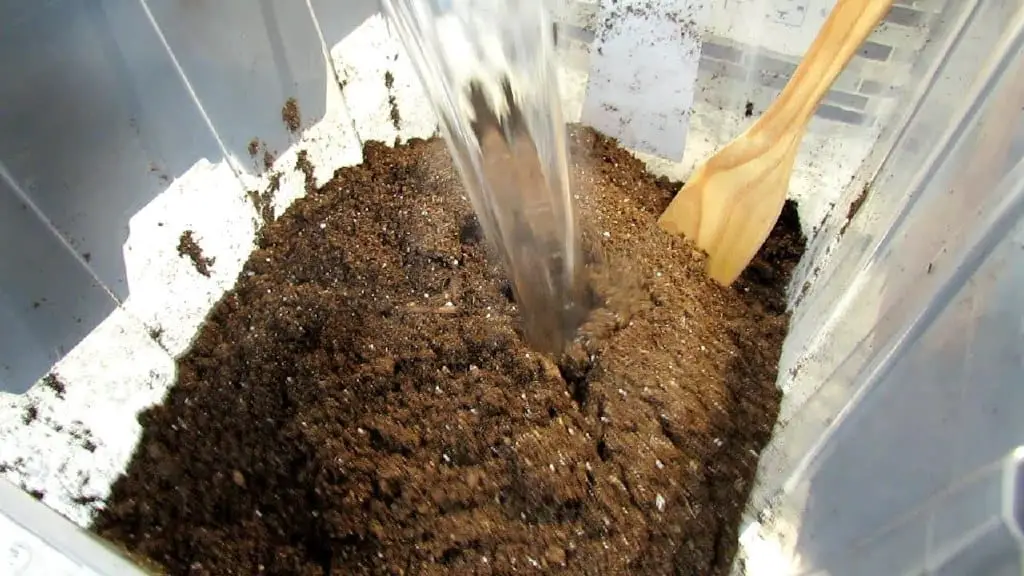
1. Eliminating Harmful Pathogens
Soil can harbor harmful pathogens such as bacteria, fungi, nematodes, and other disease-causing organisms. When you use Jeyes Fluid to sterilize the soil, it helps eliminate these potential threats and reduces the risk of infections that can affect the health of your plants.
2. Controlling Weeds
Weeds compete with your plants for nutrients and space. By sterilizing the soil, you can reduce the weed population and give your plants a better chance to grow without unwanted competition.
3. Managing Pests
Soil sterilization can also help control pests like insects, larvae, and eggs that may reside in the soil. This preventive measure can save your plants from potential damage caused by these pests.
4. Preventing Diseases
Many plant diseases can be soil-borne, meaning they are transmitted through the soil. Sterilizing the soil can act as a preventative measure, ensuring your plants don’t succumb to diseases caused by contaminated soil.
How Jeyes Fluid Sterilizes Soil
So how exactly does Jeyes Fluid go about sterilizing the soil? The sterilization process involves a series of interactions that eliminate harmful microorganisms from the soil. When Jeyes Fluid is applied to the soil, the active ingredients, such as creosote and phenols, penetrate the ground and target the microorganisms present.
The interaction between Jeyes Fluid and soil microorganisms leads to the disruption of cell membranes, causing cell death. This action effectively neutralizes harmful bacteria, fungi, and insects that may be present in the soil. As a result, the soil is left in a sanitized state, ready for new planting.
However, keep in mind that a number of factors can affect how effectively Jeyes Fluid sterilizes soil. The concentration of the Jeyes Fluid solution, the depth of application, and the type of soil all play a role in determining the success of the sterilization process.
Read: Does Roundup Sterilize the Soil or Poison the Ground?
How to Sterilize Soil with Jeyes Fluid
Before you begin, make sure to wear appropriate protective gear, such as gloves and a mask, to avoid direct contact with the concentrated fluid. Here’s a step-by-step guide to sterilizing soil using Jeyes Fluid:
1. Choose the Right Location
Select an outdoor area that is well-ventilated to carry out the soil sterilization process. The open air will help disperse any fumes from the Jeyes Fluid and minimize inhalation risks.
2. Prepare the Soil
Clear the soil of any debris, weeds, and plant remains. Rake the soil to create a smooth and even surface for treatment.
3. Dilute Jeyes Fluid
Follow the manufacturer’s instructions to dilute the Jeyes Fluid properly. The ratio of the concentrate to water may vary, so it’s essential to read the label carefully.
4. Apply the Jeyes Fluid
Using a watering can or sprayer, apply the diluted Jeyes Fluid evenly over the soil surface. Ensure that the soil is thoroughly moistened, but avoid excessive saturation.
5. Cover the Soil
To maximize the effectiveness of the sterilization process, cover the treated soil with a plastic sheet or tarp. This will create a greenhouse-like environment that traps the heat, accelerating the process.
6. Wait and Monitor
Allow the covered soil to sit for at least 24 to 48 hours, depending on the severity of the contamination. During this time, the Jeyes Fluid will work its magic, killing off harmful pathogens and pests.
7. Uncover and Aerate
After the waiting period, remove the plastic cover and let the soil breathe. Aerate the soil by turning it over with a shovel or fork. This step will help release any remaining fumes and freshen up the soil.
8. Replanting
Once the soil is aerated and any strong odors have dissipated, you can proceed with planting your desired seeds or seedlings. Your sterilized soil is now ready to provide a healthy environment for your plants to grow.
Is Jeyes Fluid Harmful to Plants?
While Jeyes Fluid is an effective soil sterilizer, it is essential to use it with caution, as it can be harmful to certain plants, especially when used incorrectly or in excessive amounts. Here are some guidelines to ensure the safety of your plants:
- Dosage Matters: Always follow the manufacturer’s instructions for diluting the Jeyes Fluid. Using it undiluted or in higher concentrations than recommended can lead to plant damage.
- Sensitive Plant Species: Some plant species are more sensitive to chemical treatments, and Jeyes Fluid may cause adverse reactions. Before using it on all your plants, test it on a small portion of the plant or a single plant to see how it reacts.
- Avoid Direct Contact: Prevent direct contact of the fluid with the foliage or stems of the plants. Focus the application on the soil surface to avoid potential harm.
- Use in Moderation: Soil sterilization with Jeyes Fluid should be done periodically or when necessary. Avoid excessive or frequent use, as it can disrupt the soil’s natural ecosystem and beneficial microbial activity.
- Consider Alternatives: If you have particularly sensitive plants or prefer a more organic approach, explore alternative soil sterilization methods, such as solarization or steam sterilization.
Guide: How To Sterilize Soil in a Greenhouse and What Techniques To Use?
Will Jeyes Fluid Affect the PH of the Soil?
The interaction between Jeyes Fluid and soil pH is a topic of curiosity for many garden enthusiasts. When considering the potential effects, it’s important to note that Jeyes Fluid typically exerts only a slight influence on the soil’s pH. While the impact may be subtle, it’s not entirely negligible. To keep your soil’s pH at the desired level, periodic testing and adjustments remain essential.
Gardening wisdom underscores the significance of a balanced pH for optimal plant growth. Jeyes Fluid, a versatile outdoor cleaning agent, can introduce slight alterations to the soil’s pH, which could potentially affect plant health. However, fret not; this impact rarely leads to drastic imbalances. Vigilance in monitoring your soil’s pH, coupled with occasional amendments, ensures that your garden’s acidity or alkalinity remains hospitable to your beloved flora.
Maintaining a harmonious pH level in your garden is akin to orchestrating a melodious symphony. Jeyes Fluid plays a soft note within this complex composition, causing only subtle ripples. Employing soil testing as your tuning fork, you can fine-tune the pH to match your plants’ preferences. The table below summarizes this dance between Jeyes Fluid and soil pH:
| Jeyes Fluid Application | Soil pH Adjustment |
| Regular | Slight Impact |
| Monitoring | Subtle Ripples |
| Adjustments | Balanced Composition |
Alternative Methods of Soil Sterilization
While Jeyes Fluid is a popular choice for soil sterilization, there are alternative methods available. Each method has its advantages and disadvantages, and the best choice depends on the specific situation. Here’s a comparison of Jeyes Fluid with other soil sterilization techniques:
| Method | Pros | Cons |
| Steam Sterilization | – Highly effective in killing pathogens and pests | – Requires specialized equipment |
| – Environmentally friendly and chemical-free | – Not suitable for large areas | |
| – Improves soil structure and nutrient availability | – May alter soil pH | |
| Solarization | – Easy and cost-effective method | – Requires ample sunlight and warm weather |
| – Kills weeds, pests, and pathogens | – Not as effective in cooler climates | |
| – Improves soil health and fertility | – Takes several weeks to complete | |
| Chemical Fumigation | – Effective against a wide range of pathogens and pests | – Can harm beneficial soil organisms |
| – Fast-acting and time-efficient | – May leave chemical residues in the soil | |
| – Suitable for large-scale applications | – Requires careful handling and application |
Depending on your gardening needs and the size of the area you want to sterilize, you can choose the method that aligns best with your requirements.
Conclusion:
In gardening, the technique of soil sterilization using Jeyes Fluid emerges as a topic of both intrigue and concern. Unveiling the secrets of this practice, we’ve explored the benefits it bestows upon the soil, and delved into the question of whether plants can tolerate its application. Throughout our journey, we’ve dissected the intricate interplay between Jeyes Fluid and plant growth, unraveling the impact it wields on the verdant tapestry of our gardens.
The process of soil sterilization using Jeyes Fluid offers a myriad of benefits to avid cultivators. From eradicating harmful pathogens to curbing the growth of unwanted weeds, the practice lays the foundation for a healthy, thriving garden bed. Yet, as we’ve journeyed through this exploration, the query persists: can plants truly withstand the effects of Jeyes Fluid in the sanctuary of our gardens?
Our investigation has revealed that, while Jeyes Fluid does possess the potential to influence plant growth and development, its impact is not an insurmountable obstacle. Understanding the composition of Jeyes Fluid allows us to appreciate its nuanced effects on our green companions. With prudence and care, judicious application and controlled use can harmonize the seemingly opposing forces of sterilization and plant sustenance.
In essence, the balance between soil sterilization using Jeyes Fluid and nurturing plant life is an art that demands an informed approach and a delicate touch. Through our expedition, we’ve uncovered the subtleties of this practice and how it intertwines with the vitality of our gardens. Armed with this knowledge, gardeners can stride forth, confident in their ability to wield Jeyes Fluid as a tool, sculpting their gardens into havens of life and splendor.
Sterilizing soil with Jeyes Fluid can be a beneficial practice to create a healthier environment for your plants. By following the proper guidelines for application and considering the needs of your specific plants, you can minimize the risks associated with its use. Remember, moderation and caution are key when dealing with any chemical treatment in your garden. So, take care of your soil, and it will reward you with thriving, vibrant plants that will make your garden a true oasis of beauty and health. Happy gardening!
FAQs on Benefits and Effects of Jeyes Fluid on Soil Sterilization
Can Jeyes Fluid be used to disinfect garden tools?
Yes, Jeyes Fluid can be used to disinfect garden tools. Prepare a solution of Jeyes Fluid as directed and soak the tools for a suitable time. Rinse them thoroughly with clean water before use.
How long does it take for Jeyes Fluid to sterilize soil?
The soil sterilization process with Jeyes Fluid usually takes 24 to 48 hours, depending on the level of contamination and the effectiveness of the treatment.
Is Jeyes Fluid safe for vegetable gardens?
Jeyes Fluid is generally safe for vegetable gardens when used properly. However, avoid direct contact with edible parts of the plants, and always adhere to the recommended dilution ratios.
Can I use Jeyes Fluid indoors for soil sterilization?
No, Jeyes Fluid should only be used outdoors for soil sterilization. Its potent fumes and chemical properties make it unsuitable for indoor use.
Does Jeyes Fluid kill all soil-borne pests and diseases?
While Jeyes Fluid is effective against many soil-borne pests and diseases, it may not eradicate all of them. Some resilient pests and diseases may survive the treatment.
Can I reuse soil treated with Jeyes Fluid?
Reusing soil treated with Jeyes Fluid is not recommended. The chemical residues may persist and potentially harm new plants.
Is Jeyes Fluid still available for purchase?
Yes, Jeyes Fluid is still available for purchase. You can find it in gardening stores and online retailers.
Can I use Jeyes Fluid directly without dilution for soil sterilization?
Never use Jeyes Fluid directly without dilution. Follow the manufacturer’s guidelines to ensure safe and effective soil sterilization.
Is it safe to sterilize soil with Jeyes Fluid in an enclosed area?
Avoid sterilizing soil with Jeyes Fluid in enclosed areas. The fumes can be harmful when concentrated in a confined space.

